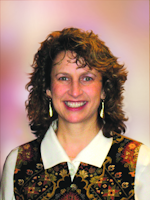Researchers create semiconductor laser chip with 200 nm tuning range
An international research team led by Professor Cun-Zheng Ningof Arizona State University has created a single semiconductor laser chip claiming a world-record wavelength tuning range of 200 nanometers (500 to 700 nm). The breakthrough promises to advance a variety of applications including spectroscopy, telecommunications, and on-chip biological and chemical detection. The results are reported in Nano Letters.
Development of a widely tunable laser has been elusive. One reason is the limited lattice mismatch allowed in the standard epitaxial-based approach (wavelength of light emission is determined by the bandgaps of semiconductors). Also, widely tunable lasers require alloy semiconductors with similarly tunable bandgaps--which are in turn determined by alloy composition--are typically limited by lattice mismatch with the chosen substrate.
Using nanowires, however, the research team was able to overcome the lattice mismatch limitation. This means it is possible, theoretically, to grow alloy semiconductors of widely changing composition on a single substrate.
They carefully engineered and controlled the growth temperature and other parameters, and succeeded in to growing ternary alloy CdSxSe1-x nanowires with composition x changing from 0 to 1 continuously from one end of the substrate to the other. As a result, the wafer has a continuous spatial grading of bandgaps between 1.75 eV and 2.5 eV (500 to 700 nm wavelength). With the wafer covered by nanowires that individually can act as nanolasers, numerous such nanolasers of continuously tuning wavelength are formed by a single growth on a single substrate. Under optical pumping, the team was able to show that each spot along the wafer length showing lasing behavior.
Tunable laser sources are key to spectroscopic applications from research laboratories to molecular finger-print based field detection and sensing. They can act as multi-agent excitation light sources for fluorescence chip-based biological or chemical detection, and are useful for multiplexing or de-multiplexing for chip-based communication applications.
Ning, a professor in the Department of Electrical Engineering in the Ira A. Fulton School of Engineering at Arizona State University, led a group consisting of other ASU researchers, Dr. Anlian Pan, Weichang Zhou, Dr. Eunice Leong, Dr. Ruibin Liu, and Dr. Alan Chin, and his collaborator, Dr. B.S. Zou of Hunan University, China.
Ning's research group is currently working to extend the tunability to an even wider wavelength range and is developing several applications of such unique alloy materials in solar cells, detection, lighting and displays. In each of these applications, the unique materials capability is going to significantly improve the performance of the devices.
For more information see the paper Continuous Alloy-Composition Spatial Grading and Superbroad Wavelength-Tunable Nanowire Lasers on a Single Chip in Nano Letters.

Barbara Gefvert | Editor-in-Chief, BioOptics World (2008-2020)
Barbara G. Gefvert has been a science and technology editor and writer since 1987, and served as editor in chief on multiple publications, including Sensors magazine for nearly a decade.